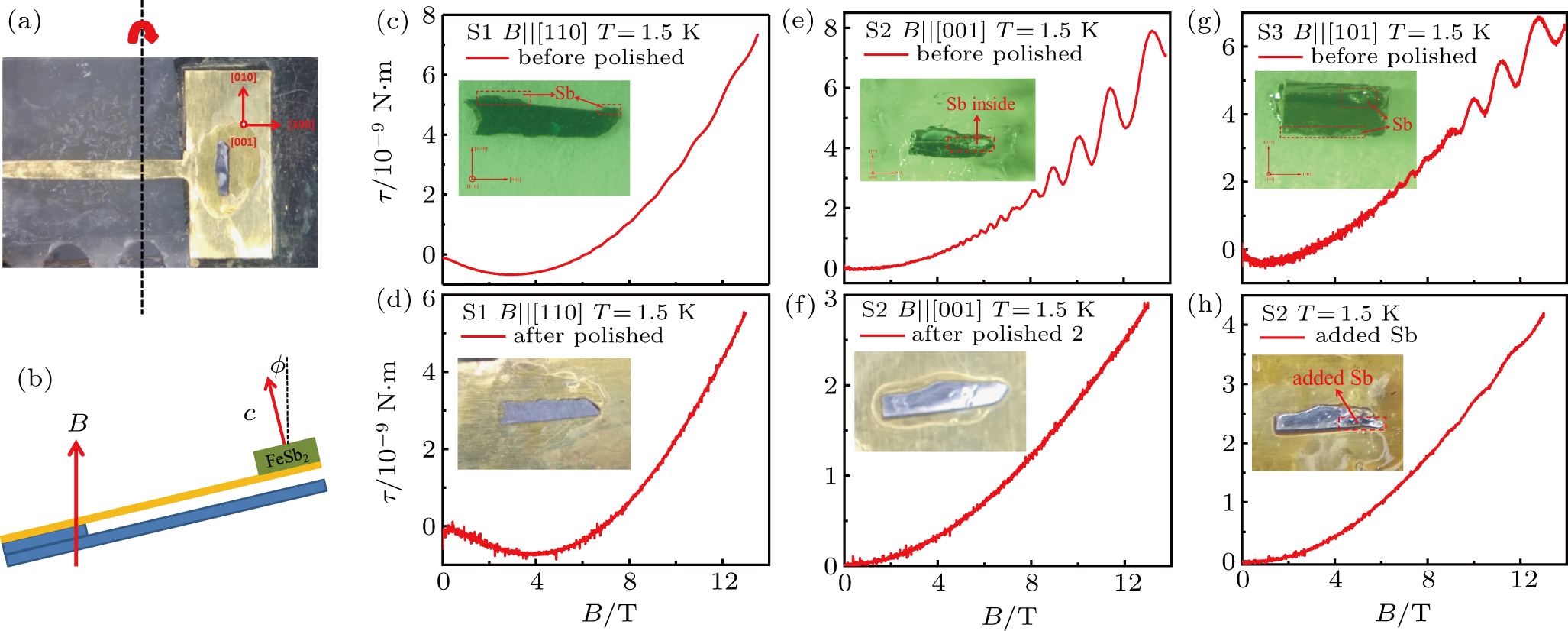Negative differential resistance and quantum oscillations in FeSb2 with embedded antimony
Project supported by Guangdong Innovative and Entrepreneurial Research Team Program, China (Grant No. 2016ZT06D348), the National Natural Science Foundation of China (Grant No. 11874193), and the Shenzhen Fundamental Subject Research Program, China (Grant Nos. JCYJ20170817110751776 and JCYJ20170307105434022). The work at Brookhaven is supported by the US Department of Energy, Office of Basic Energy Sciences as part of the Computational Material Science Program (material synthesis).
(a) and (b) Optical photograph and a schematic setup of our magnetic torque measurement. (c)–(g) Torque measurements for three as-grown FeSb2 samples (S1–S3) with field applied along different crystal axes, in which nice dHvA oscillations can be seen. Insets: Photographs of crystals clearly show some remaining antimony flux on sample surface. (d) and (f) The same measurements as panels (c) and (e) for S1 and S2 after removing antimony flux by proper polishing, which cannot resolve any oscillations at our experimental resolutions. (h) Recovery of dHvA oscillations by adding some antimony manually onto the polished S2 sample surface. Note: S2 has been polished for two times — After the first polishing, the antimony is seen and checked by EDS, and the dHvA oscillations are observed. After the second polishing, there are no remaining antimony and dHvA oscillations.
